1,10-DIIODODECANE
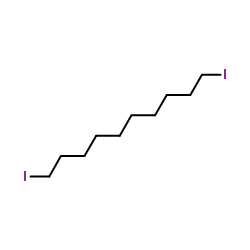
1,10-DIIODODECANE structure
|
Common Name | 1,10-DIIODODECANE | ||
|---|---|---|---|---|
| CAS Number | 16355-92-3 | Molecular Weight | 394.075 | |
| Density | 1.7±0.1 g/cm3 | Boiling Point | 349.7±0.0 °C at 760 mmHg | |
| Molecular Formula | C10H20I2 | Melting Point | 33-35 °C(lit.) | |
| MSDS | Chinese USA | Flash Point | 146.7±14.5 °C | |
| Symbol |

GHS07 |
Signal Word | Warning | |
| Name | 1,10-Diiododecane |
|---|---|
| Synonym | More Synonyms |
| Density | 1.7±0.1 g/cm3 |
|---|---|
| Boiling Point | 349.7±0.0 °C at 760 mmHg |
| Melting Point | 33-35 °C(lit.) |
| Molecular Formula | C10H20I2 |
| Molecular Weight | 394.075 |
| Flash Point | 146.7±14.5 °C |
| Exact Mass | 393.965424 |
| LogP | 6.49 |
| Vapour Pressure | 0.0±0.7 mmHg at 25°C |
| Index of Refraction | 1.556 |
| Storage condition | 2-8°C |
Synonym: Section 2 - COMPOSITION, INFORMATION ON INGREDIENTS
Risk Phrases: None Listed. Section 3 - HAZARDS IDENTIFICATION EMERGENCY OVERVIEW
Light sensitive.The toxicological properties of this material have not been fully investigated. Potential Health Effects Eye: May cause eye irritation. No information regarding eye irritation and other potential effects was found. Skin: May cause skin irritation. No information regarding skin irritation and other potential effects was found. Ingestion: The toxicological properties of this substance have not been fully investigated. Inhalation: The toxicological properties of this substance have not been fully investigated. Chronic: Not available. Section 4 - FIRST AID MEASURES Eyes: Flush eyes with plenty of water for at least 15 minutes, occasionally lifting the upper and lower eyelids. Get medical aid immediately. Skin: Get medical aid. Flush skin with plenty of water for at least 15 minutes while removing contaminated clothing and shoes. Ingestion: If victim is conscious and alert, give 2-4 cupfuls of milk or water. Never give anything by mouth to an unconscious person. Get medical aid. Inhalation: Remove from exposure and move to fresh air immediately. If not breathing, give artificial respiration. If breathing is difficult, give oxygen. Get medical aid. Notes to Physician: Section 5 - FIRE FIGHTING MEASURES General Information: As in any fire, wear a self-contained breathing apparatus in pressure-demand, MSHA/NIOSH (approved or equivalent), and full protective gear. Extinguishing Media: Use water spray, dry chemical, carbon dioxide, or appropriate foam. Section 6 - ACCIDENTAL RELEASE MEASURES General Information: Use proper personal protective equipment as indicated in Section 8. Spills/Leaks: Sweep up or absorb material, then place into a suitable clean, dry, closed container for disposal. Section 7 - HANDLING and STORAGE Handling: Wash thoroughly after handling. Use only in a well-ventilated area. Avoid contact with eyes, skin, and clothing. Avoid ingestion and inhalation. Storage: Keep container closed when not in use. Store in a cool, dry, well-ventilated area away from incompatible substances. Section 8 - EXPOSURE CONTROLS, PERSONAL PROTECTION Engineering Controls: Use adequate ventilation to keep airborne concentrations low. Exposure Limits CAS# 16355-92-3: Personal Protective Equipment Eyes: Wear appropriate protective eyeglasses or chemical safety goggles as described by OSHA's eye and face protection regulations in 29 CFR 1910.133 or European Standard EN166. Skin: Wear appropriate protective gloves to prevent skin exposure. Clothing: Wear appropriate protective clothing to prevent skin exposure. Respirators: Follow the OSHA respirator regulations found in 29 CFR 1910.134 or European Standard EN 149. Use a NIOSH/MSHA or European Standard EN 149 approved respirator if exposure limits are exceeded or if irritation or other symptoms are experienced. Section 9 - PHYSICAL AND CHEMICAL PROPERTIES Physical State: Crystals Color: off-white crystal to orange liquid - after melting, Odor: None reported. pH: Not available. Vapor Pressure: Not available. Viscosity: Not available. Boiling Point: 197.0 - 200.0 deg C @ 12.00mm Freezing/Melting Point: 28.00 - 32.00 deg C Autoignition Temperature: Not available. Flash Point: 110 deg C ( 230.00 deg F) Explosion Limits, lower: Not available. Explosion Limits, upper: Not available. Decomposition Temperature: Solubility in water: Specific Gravity/Density: Molecular Formula: C10H20I2 Molecular Weight: 394.07 Section 10 - STABILITY AND REACTIVITY Chemical Stability: Stable under normal temperatures and pressures. Conditions to Avoid: Incompatible materials, light. Incompatibilities with Other Materials: Strong oxidizing agents, strong bases. Hazardous Decomposition Products: Carbon monoxide, carbon dioxide, hydrogen iodide. Hazardous Polymerization: Has not been reported. Section 11 - TOXICOLOGICAL INFORMATION RTECS#: CAS# 16355-92-3 unlisted. LD50/LC50: Not available. Carcinogenicity: 1,10-Diiododecane - Not listed by ACGIH, IARC, or NTP. Section 12 - ECOLOGICAL INFORMATION Section 13 - DISPOSAL CONSIDERATIONS Dispose of in a manner consistent with federal, state, and local regulations. Section 14 - TRANSPORT INFORMATION IATA Not regulated as a hazardous material. IMO Not regulated as a hazardous material. RID/ADR Not regulated as a hazardous material. Section 15 - REGULATORY INFORMATION European/International Regulations European Labeling in Accordance with EC Directives Hazard Symbols: Not available. Risk Phrases: Safety Phrases: S 24/25 Avoid contact with skin and eyes. WGK (Water Danger/Protection) CAS# 16355-92-3: No information available. Canada CAS# 16355-92-3 is listed on Canada's NDSL List. CAS# 16355-92-3 is not listed on Canada's Ingredient Disclosure List. US FEDERAL TSCA CAS# 16355-92-3 is listed on the TSCA inventory. SECTION 16 - ADDITIONAL INFORMATION N/A |
| Symbol |

GHS07 |
|---|---|
| Signal Word | Warning |
| Hazard Statements | H315-H319-H335 |
| Precautionary Statements | P261-P305 + P351 + P338 |
| Personal Protective Equipment | Eyeshields;full-face respirator (US);Gloves;multi-purpose combination respirator cartridge (US);type ABEK (EN14387) respirator filter |
| Hazard Codes | Xi: Irritant; |
| Risk Phrases | R36/37/38 |
| Safety Phrases | S26-S37/39 |
| RIDADR | 2811 |
| WGK Germany | 3 |
| Packaging Group | III |
| Hazard Class | 6.1(b) |
| HS Code | 2903399090 |
| Precursor 9 | |
|---|---|
| DownStream 10 | |
| HS Code | 2903399090 |
|---|---|
| Summary | 2903399090. brominated,fluorinated or iodinated derivatives of acyclic hydrocarbons. VAT:17.0%. Tax rebate rate:13.0%. . MFN tariff:5.5%. General tariff:30.0% |
|
Cryptophanols, new versatile compounds for the synthesis of functionalized cryptophanes and polycryptophanes.
Chem. Commun. (Camb.) (1) , 48-9, (2002) After deprotection with a palladium catalyst, mono-allylated cryptophane-A (1, 2) and cryptophane-E (3) gave the new cryptophanols 4, 5 and 6, respectively, which are important key compounds for the p... |
|
|
Electrochemical reduction of 1, 10-dihalodecanes at mercury cathodes in dimethylformamide. Bart JC and Peters DG.
J. Electroanal. Chem. Interfac. Electrochem. 280(1) , 129-44, (1990)
|
|
|
Gelation of chemically cross-linked polygalacturonic acid derivatives. Matricardi P, et al.
Carbohydr. Polym. 27(3) , 215-20, (1995)
|
| EINECS 240-415-6 |
| MFCD00001086 |
| Decane, 1,10-diiodo- |
| 1,10-DIIODODECANE |
| Decamethylene Diiodide |
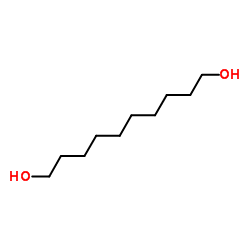 CAS#:112-47-0
CAS#:112-47-0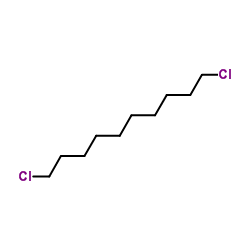 CAS#:2162-98-3
CAS#:2162-98-3 CAS#:111-20-6
CAS#:111-20-6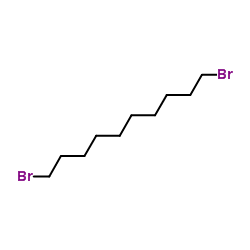 CAS#:4101-68-2
CAS#:4101-68-2 CAS#:61575-02-8
CAS#:61575-02-8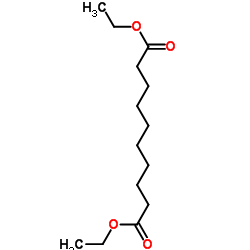 CAS#:110-40-7
CAS#:110-40-7 CAS#:10471-28-0
CAS#:10471-28-0 CAS#:53463-68-6
CAS#:53463-68-6 CAS#:10034-85-2
CAS#:10034-85-2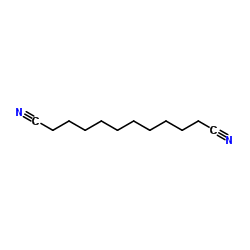 CAS#:4543-66-2
CAS#:4543-66-2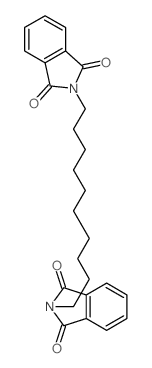 CAS#:30391-54-9
CAS#:30391-54-9 CAS#:124-18-5
CAS#:124-18-5 CAS#:112-95-8
CAS#:112-95-8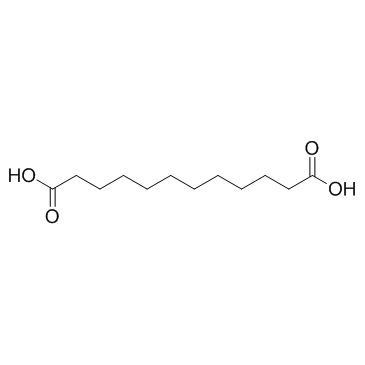 CAS#:693-23-2
CAS#:693-23-2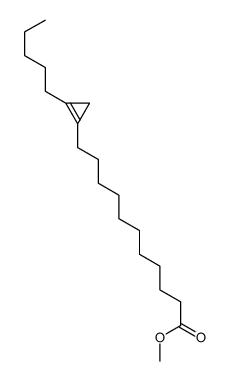 CAS#:102119-87-9
CAS#:102119-87-9 CAS#:1871-96-1
CAS#:1871-96-1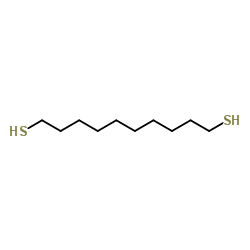 CAS#:1191-67-9
CAS#:1191-67-9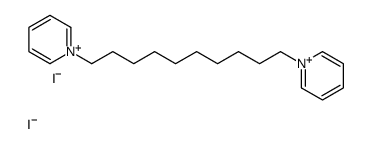 CAS#:32113-15-8
CAS#:32113-15-8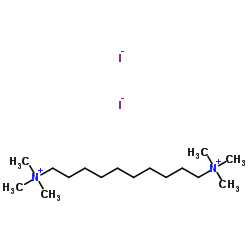 CAS#:1420-40-2
CAS#:1420-40-2